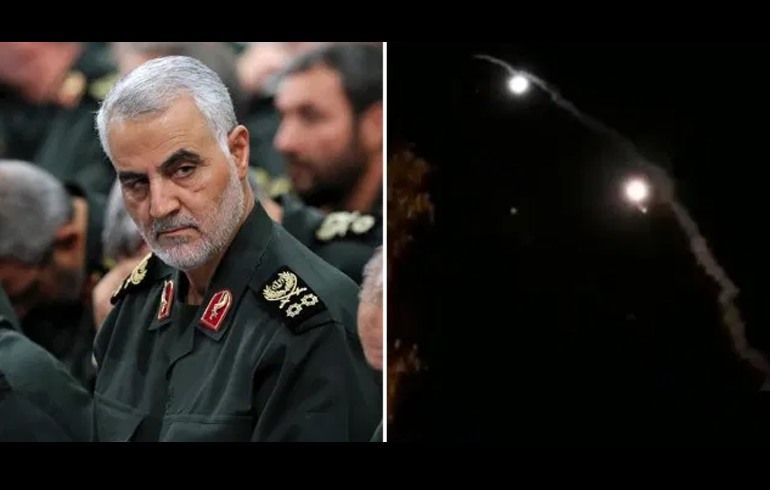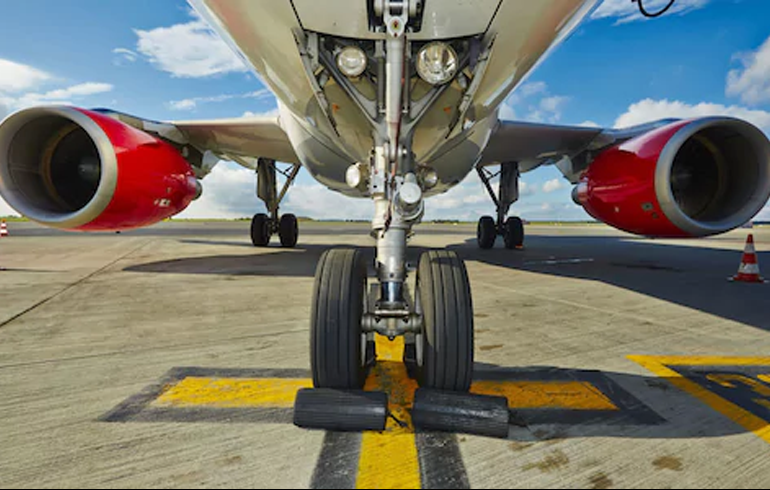Iran has carried out a ballistic missile attack on airbases housing US forces in Iraq, in retaliation for the US killing of General Qasem Soleimani.
More than a dozen missiles launched from Iran struck two air bases in Irbil and Al Asad, west of Baghdad.
It is unclear if there have been any casualties.
The initial response from Washington has been muted. President Trump tweeted that all was well and said casualties and damage were being assessed.
Two Iraqi bases housing the US and coalition troops were targeted – one at Al Asad and one in Irbil at about 2:00 am local time (10.30 pm GMT), just hours after the burial of Soleimani.
Iran’s Supreme Leader Ayatollah Khamenei said the attack was “a slap in the face” for the US and called for an end to the US presence in the region.
Echoing him, President Hassan Rouhani said the US would have its “feet cut off” in the Middle East.
Hours after the airstrikes a Ukrainian airliner crashed in Iran shortly after take-off. Ukraine’s Tehran embassy initially blamed engine failure but later removed the statement.
Several airlines have suspended flights to Iran and Iraq amid the rising tension.
Is this the end of the escalation?
This is the most direct assault by Iran on the US since the seizing of the US embassy in Tehran in 1979.
Iran’s Revolutionary Guards said the attack was in retaliation for the death of Soleimani on Friday – killed in a missile strike outside Baghdad airport on the orders of President Trump – and warned US allies that their bases could also be targeted.
Iran’s Defence Minister Amir Hatami said Iran’s response to any US retaliation would be proportional to the US action.
But Iranian Foreign Minister Mohammad Javad Zarif said the attack was self-defence and denied seeking to escalate the situation into war.
The BBC’s Middle East editor Jeremy Bowen in Baghdad says the tweets appear to suggest that Iran wishes to draw a line under its retaliation for the assassination of Soleimani and is putting the onus on the US as to whether the situation escalates.
The end of retaliation… for now?
Jonathan Marcus, BBC defence and diplomatic correspondent
Given the significance of General Soleimani and the passions that his killing aroused – Iran’s military strike against US bases in Iraq was a modest response.
The attack was clearly timed to cause as few casualties as possible. Both the US and Iran – for all their rhetoric – do not want a wider conflict. So maybe a line can be drawn under this matter for now.
Is this the end of Iran’s retaliation? Time will tell.
But it is hard to see Iranian policy changing. It is presumably still going to try to secure its regional goals, not least the departure of US forces from Iraq.
The Soleimani killing has weakened the US position there. But it was rocket attacks from Iran’s proxies – local Shia militia – against US bases that formed the prelude to this recent crisis.
Has the US established any measure of deterrence? And if not, will Iranian-inspired attacks resume in due course?
What is the status of US troops in Iraq?
The US has around 5,000 troops in Iraq tasked with preventing a resurgence of the Islamic State group (IS) there.
President Trump said on Tuesday a US withdrawal of troops from Iraq would be the worst thing for the country.
His comments came in the wake of a letter, which the US military said had been sent in error, to Iraq’s prime minister, which suggested that the US would be “repositioning” forces in the country.
The UK foreign office told the BBC: “We are urgently working to establish the facts on the ground. Our first priority is the security of British personnel.” The UK has put the Royal Navy and military helicopters on standby amid rising tensions in the Middle East, Defence Secretary Ben Wallace said earlier.
Israeli Prime Minister Benjamin Netanyahu warned that Israel would strike back hard against any attack and said President Trump should be congratulated for acting “swiftly, boldly and resolutely” in assassinating Soleimani.
How did we get here?
The assassination of Soleimani – head of the Revolutionary Guards’ elite Quds Force and architect of Iranian policy in the region – on January 3 was a major escalation in already deteriorating relations between Iran and the US.
The general – who controlled Iran’s proxy forces across the Middle East – was regarded as a terrorist by the US government, which says he was responsible for the deaths of hundreds of American troops and was plotting “imminent” attacks.
Iran vowed “severe revenge” for his death.
Mr Trump, meanwhile, warned the US would respond in the event of retaliation “perhaps in a disproportionate manner”.
“He was a monster. And he’s no longer a monster. He’s dead,” Mr Trump said, defending his decision. “He was planning a big attack, a bad attack for us. I don’t think anyone can complain about it.”
Millions of Iranians turned out for the commander’s funeral, with mourners chanting “death to America” and “death to Trump”. A stampede at the burial in Soleimani’s hometown Kerman killed 50 people and injured 200 more on Tuesday.
After the event resumed, top Iranian officials renewed their threats of revenge.
“The martyr Qasem Soleimani is more powerful… now that he is dead,” the Revolutionary Guards’ commander-in-chief, Maj Gen Hossein Salami, told the crowds.
How does Iraq fit into this?
Iran supports a variety of Shia militia groups in neighbouring Iraq. On Friday, Soleimani had just arrived at Baghdad airport and was travelling in a convoy alongside officials from such groups when their cars were hit by several US missiles.
Iraq now finds itself in a difficult position as an ally both of Iran and of the US. Thousands of US troops remain in the country to assist in the broader struggle against the Sunni Islamic State (IS) group but Iraq’s government insists the US has acted beyond the terms of this agreement.
Prime Minister Adel Abdul Mahdi labelled the missile strike that killed Soleimani as a “brazen violation of Iraq’s sovereignty and a blatant attack on the nation’s dignity”.
Source: BBC




















































